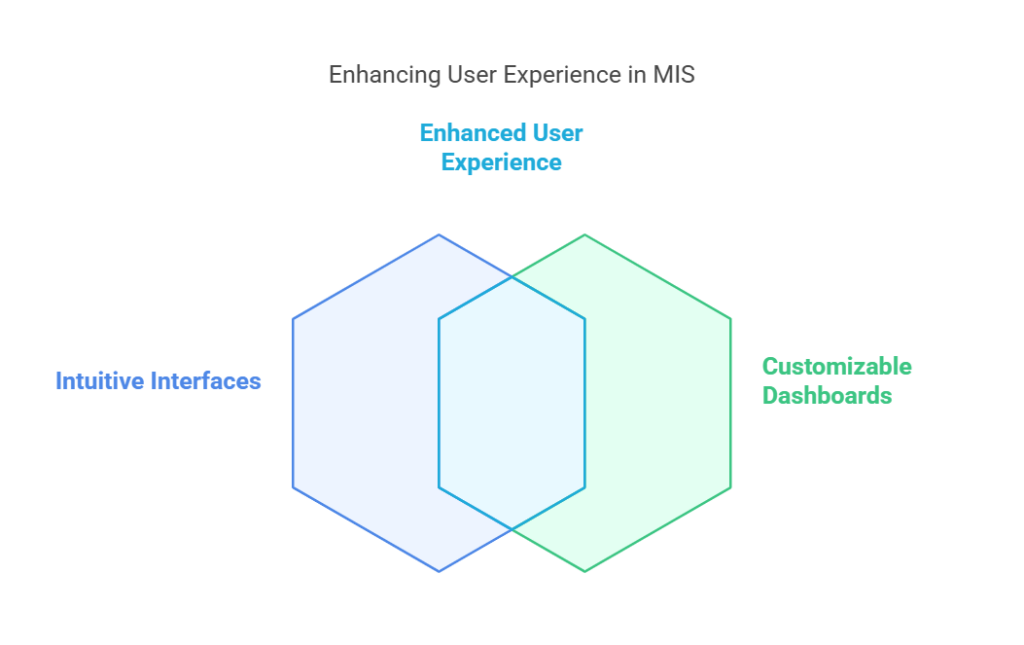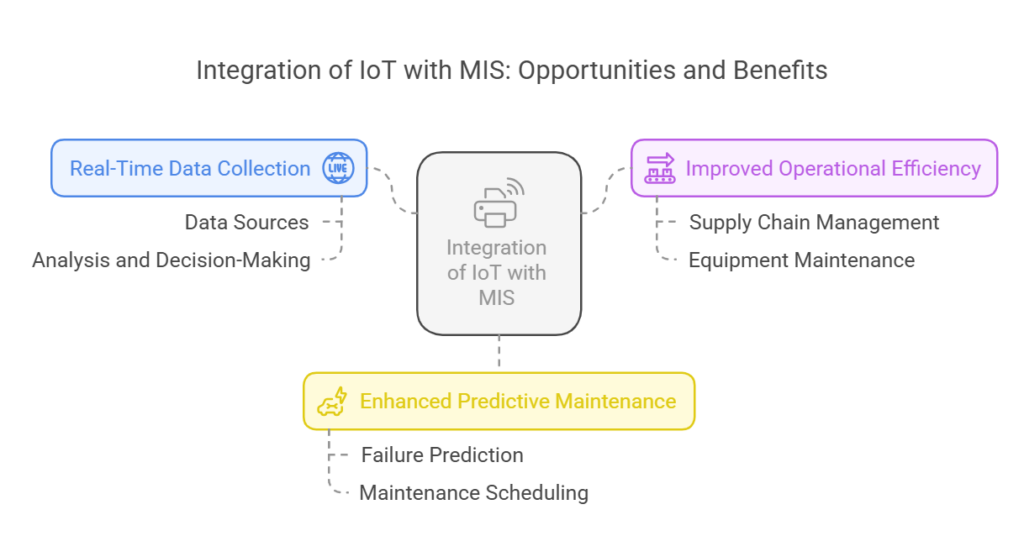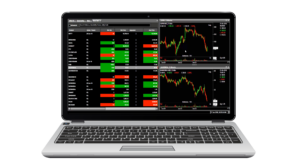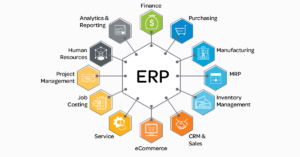
Management Information Systems (MIS) have evolved significantly over the past few years, driven by advancements in technology and changing business needs. As businesses strive for greater efficiency, data-driven decision-making, and enhanced customer experiences, several key trends are shaping the landscape of MIS. This blog provides a detailed exploration of these recent trends on “recent trends in management information systems,” “MIS advancements,” and “evolution in MIS.”

1. Integration of Artificial Intelligence (AI) and Machine Learning (ML)
Artificial Intelligence (AI) and Machine Learning (ML) are revolutionizing Management Information Systems. These technologies enable MIS to analyze vast amounts of data, identify patterns, and make predictive analyses.
- Predictive Analytics: AI and ML enhance predictive analytics by providing more accurate forecasts and insights. Businesses can anticipate market trends, customer preferences, and potential risks, leading to proactive decision-making.
- Automation of Routine Tasks: AI-powered systems automate repetitive tasks such as data entry and report generation, freeing up valuable human resources for more strategic activities.
- Enhanced Data Analysis: Advanced algorithms analyze complex datasets, uncovering hidden insights and trends that might be missed by traditional methods.

2. Cloud-Based MIS Solutions
Cloud computing has transformed how MIS solutions are deployed and managed. Cloud-based MIS offers several advantages over traditional on-premises systems:
- Scalability and Flexibility: Cloud solutions provide scalable resources that can be adjusted according to business needs. This flexibility allows businesses to adapt quickly to changing demands.
- Cost Efficiency: By moving to the cloud, organizations can reduce costs associated with hardware, maintenance, and IT personnel. Pay-as-you-go models further enhance cost control.
- Enhanced Collaboration: Cloud-based MIS facilitates real-time collaboration among team members, regardless of their geographical locations. This improves communication and coordination within the organization.

3. Big Data and Data Analytics
The rise of Big Data has brought about a significant shift in how organizations handle and utilize information. Recent trends in MIS emphasize the importance of harnessing Big Data for strategic advantage:
- Real-Time Data Processing: Big Data technologies enable real-time processing of vast amounts of data, providing timely insights and allowing for immediate decision-making.
- Advanced Data Visualization: Modern MIS solutions incorporate sophisticated data visualization tools, making it easier for users to interpret and act on complex data.
- Integration with Business Intelligence (BI) Tools: MIS increasingly integrates with BI tools to enhance reporting, forecasting, and decision-making capabilities.

4. Focus on Cybersecurity
As organizations become more reliant on digital systems, cybersecurity has become a critical concern in the realm of MIS. Recent trends highlight the growing emphasis on protecting sensitive information:
- Advanced Security Protocols: MIS solutions are incorporating advanced security measures, including encryption, multi-factor authentication, and intrusion detection systems, to safeguard against cyber threats.
- Compliance with Regulations: Organizations are prioritizing compliance with data protection regulations such as GDPR and CCPA, ensuring that their MIS practices adhere to legal requirements.
- Continuous Monitoring: Implementing continuous monitoring and threat detection systems helps in identifying and responding to potential security breaches in real-time.

5. Mobile and Remote Access
The shift towards remote work and the increasing use of mobile devices have influenced MIS design and functionality:
- Mobile-Friendly Interfaces: Modern MIS solutions are designed with mobile compatibility in mind, allowing users to access information and perform tasks from their smartphones and tablets.
- Remote Access Capabilities: With the rise of remote work, MIS platforms are providing secure remote access options, enabling employees to work from anywhere while maintaining system integrity.
- Enhanced User Experience: Mobile and remote access features are designed to offer a seamless user experience, ensuring that employees can efficiently interact with the system regardless of their location.

6. User-Centric Design and Personalization
Recent trends in MIS emphasize the importance of user-centric design and personalization:
- Intuitive Interfaces: Modern MIS solutions prioritize user-friendly interfaces that simplify navigation and improve overall usability.
- Customizable Dashboards: Personalization features, such as customizable dashboards, allow users to tailor their experience based on their specific roles and preferences.
- Enhanced User Support: Integrated support tools, such as chatbots and help centers, offer users immediate assistance and resources, enhancing their overall experience with the system.

7. Integration with Internet of Things (IoT)
The integration of Internet of Things (IoT) devices with MIS is creating new opportunities for data collection and analysis:
- Real-Time Data Collection: IoT devices provide real-time data from various sources, which can be integrated into MIS for more comprehensive analysis and decision-making.
- Improved Operational Efficiency: IoT-enabled MIS can monitor and optimize operations, from supply chain management to equipment maintenance, leading to increased efficiency and reduced downtime.
- Enhanced Predictive Maintenance: IoT data helps in predicting equipment failures and scheduling maintenance activities, minimizing disruptions and extending the lifespan of assets.
Conclusion
The recent trends in Management Information Systems reflect a shift towards more intelligent, flexible, and user-centric solutions. The integration of AI, cloud computing, Big Data, and IoT, along with a heightened focus on cybersecurity and mobile accessibility, are transforming how organizations manage and utilize information. By staying abreast of these trends, businesses can leverage MIS to drive innovation, enhance decision-making, and achieve a competitive edge in today’s dynamic market.
Understanding and adopting these trends will enable organizations to build robust MIS frameworks that align with their strategic goals and operational needs, ensuring long-term success and resilience.









